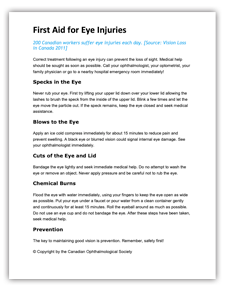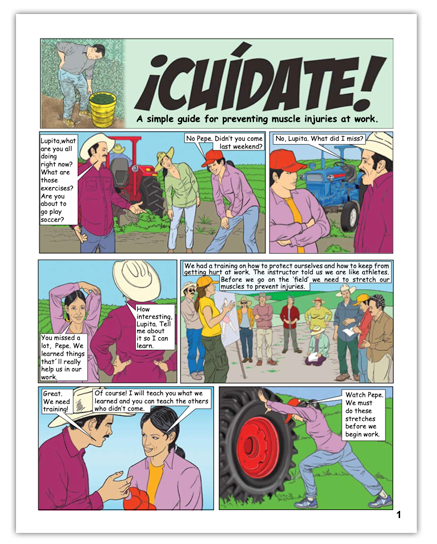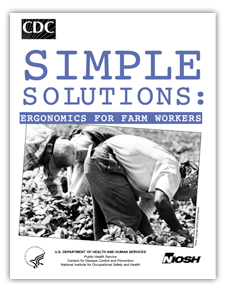Migrant and Temporary Foreign Agriculture Workers (TFAW) Program
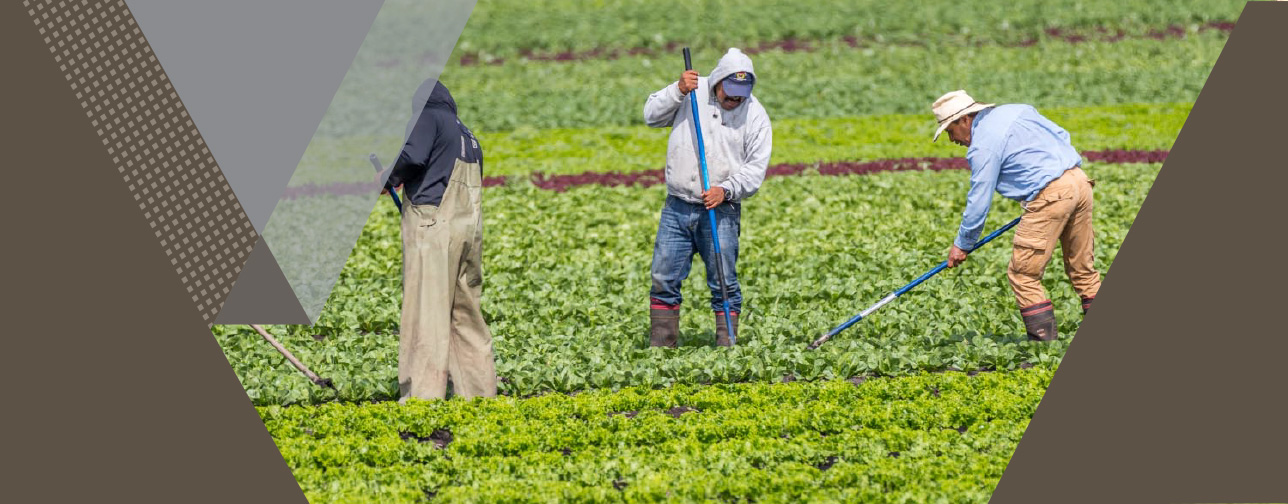
Migrant and Temporary
How does OHCOW help Temporary Foreign Workers and their Employers?
- Providing resources and education on labour laws and worker safety
- Distributing materials such as informative posters, guides and other print materials
- Providing translation services
- Consultation and research into improving the lives of migrant workers at their jobs
Posters, Webinars, Infographics and more
 Medical Clinic Resources for Migrant and Temporary Agricultural Workers in Ontario
Medical Clinic Resources for Migrant and Temporary Agricultural Workers in Ontario
Foreign workers have options when they need to obtain medical services. Check out our interactive map with links to information about clinics in specific regions of the province. Included is contact information and addresses and other useful links.
New Infographics
Introduction
Every year thousands of temporary foreign agricultural workers come to Canada to work in the agriculture industry – including 20,000 arriving in Ontario to work on farms and in greenhouses. These workers play a vital role in the industry, and therefore, in Ontario’s economy.
The Provincial Expert Advisory Panel on Occupational Health and Safety, and subsequently, the Ontario Ministry of Labour (MOL), have identified this labour force as a group who face barriers in accessing effective occupational health and safety resources and support.
As migrant farm workers spend the majority of their time at work, and farm work can be physically demanding, involving a variety of hazards, an occupational health and safety focus is particularly important for supporting the health of this population.
Since 2006 we have offered our services to migrant farm workers, their employers and community partners with the aim to continue to become valued partners in agricultural and horticultural occupational health and safety.
Regions we Serve
Every season we connect and work with more and more Ontario growers, with farms in: Durham, Haldimand-Norfolk, Niagara Regions, Brant County, Lambton County
We support them in addressing the challenges of working with a diverse workforce. Part of OHCOW's role is to ensure that occupational health and safety guidelines and programs are understood and effective in the form of Workshops, video and literary resources, enforcing strategies and best practices through health and safety programs, consultation services and translation services.
OHCOW RESOURCE
WEBINAR
Community & Workplace Psychosocial Support for the Mental Health of IAW in Ontario
May 22, 2022
A presentation made as part of the 2022 MayDay, MayDay Webinar Series: Workplace Mental Health Interventions and Other Solutions. Presenters: Eduardo Huesca, Community Program and Outreach Coordinator and Leonor Cedillo, Research Lead, OMAFRA Project, OHCOW
OHCOW RESOURCE
WEBINAR
International Agricultural Worker Health and Safety Workshop
Day of Mourning 2021
A 90 minute presentation on the effect of Covid-19 on Farmworkers, including the Deputy Chief Coroner’s Review: COVID-19 Related Deaths of Temporary Foreign Agricultural Workers in 2020, Health and Safety in the Time of COVID-19 – What Does It Mean for International Agricultural Workers? and more.
Workers' Rights Apply to Temporary Foreign Workers
Migrant and Foreign workers are covered by the same laws as anyone working in Ontario, and employers of temporary workers have the same responsibility to provide a safe work environment. This is important because foreign workers may not know their rights. For instance, a worker can refuse unsafe work at any time and cannot be fired from their job for doing so. If a worker is injured or becomes ill due to an incident or conditions at their job, they are entitled to compensation.
OHCOW RESOURCE
CONFERENCE VIDEOS
Work, Migration and Health Forum: Precarity, Vulnerability, Health and Safety Among Newcomers and Temporary Foreign Workers in Canada
2018
A selection of 18 20-30 minute videos on topics such as Health and Social Services, Advocacy, Policy, recommendations for change, presented by expert speakers.
Building a Positive Health and Safety Culture for Migrant Workers
Migrant workers perform strenuous and sometimes hazardous physical work. There are mental health challenges to the job as well. Migrant workers are removed from their families and society and are in a foreign environment with a different culture and language. OHCOW offers an inventory of mental health and psychosocial wellbeing resources and services. These are available to Latinx and Caribbean International Agricultural Workers (IAWs) in Ontario, created from research that involved a scoping review of scientific literature, structured interviews with IAWs and other stakeholders, including community groups, employers, employers’ associations, primary health care clinics.
These resources include those developed by NIOSH, CAL OSHA, the US National Center for Farmworker Health (NCFH), among others.
OHCOW RESOURCE
REPORT
Mental Health and Psychosocial Supports for International Agricultural Workers in Ontario: A report prepared by OHCOW for the Ontario Ministry of Agriculture, Food and Rural Affairs (OMAFRA)
April 2022
A report on a project to create an inventory of available mental health and psychosocial wellbeing supports and services available to Latinx and Caribbean International Agricultural Workers (IAWs) in Ontario, and to distribute findings to these workers.
Selected Resources
Video Series, PDFs, Infographics, Posters and more...
Resources for Temporary Foreign Workers & Employers
Webinars, Video Series, PDFs, Infographics, Posters, Reports and more...
- All
- 2018
- 2021
- 2022
- 2023
- Advocacy
- Agriculture
- air filters
- Air Quality Health Index (AQHI)
- Awareness / Empowerment
- Best Practices
- Bullying
- Calling 911
- Cold101
- Communication
- Community
- Control Methods
- Coroner Reports
- COVID (MFW)
- Emergency Preparedness
- Emergency Response
- Employer Responsibilities
- Ergonomics
- Eyes
- First Aid
- frosbite
- Greenhouses
- Heat
- Heat Stress
- Heat-related Illnesses
- Indoor Air Quality (IAQ)
- interpreters
- interpreting
- Legislation
- Masks / Respirators
- Mental Health
- Musculoskeletal Disorders
- Outreach
- Personal Protective Equipment (PPE)
- Pesticides
- Policies / Procedures
- Prevention
- Programs / Resources
- Rights / Responsibilities
- Sexual Health
- signs and symptoms
- Social Services
- Support Services
- Temporary Foreign Agricultural Workers
- Training
- Transmission / Exposure Control
- Wildfire Smoke
- Work Refusal
FOR EMPLOYERS
Heightened COVID-19 Risks to Temporary Foreign (Migrant) Agricultural Workers (TFAWs) and Recommended Actions in the 2020 Agricultural Season Occupational Medicine
A Perspective Paper
by Donald C Cole MD, DOHS, MSc, FRCP(C), Occupational, Environmental and Public Health Medicine Consultant
Recommendations for Overcoming Health Challenges Faced By Migrant Agricultural Workers during the COVID-19-Virus Pandemic
Report to ESDC (last update June 9, 2020)
Health and Safety Guides and Toolkits
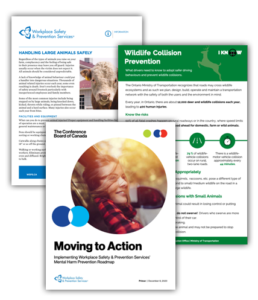
(many are related to agricultural work)
Source: Workplace Safety & Prevention Services
EVENT RESOURCES
- All
- 2016
- 2018
- 2021
- 2023
- Advocacy
- Agriculture
- air filters
- Air Quality Health Index (AQHI)
- Awareness / Empowerment
- Best Practices
- Cold101
- conferences
- Coroner Reports
- Data Collection
- Day of Mourning
- Eating Healthy
- Employer Responsibilities
- Employment Agencies
- extreme cold
- frosbite
- Greenhouses
- Hazards
- Heat
- Heat Stress
- Heat-related Illnesses
- Hydration
- Indoor Air Quality (IAQ)
- interpreters
- interpreting
- Legislation
- Mental Health
- Migrant Farm Workers
- Musculoskeletal Disorders
- Newcomers / Refugees
- outdoors
- Pesticides
- Policies / Procedures
- Precarious Work
- Programs / Resources
- Sexual Health
- signs and symptoms
- Social Services
- Supportive Spaces
- Temporary Foreign Agricultural Workers
- Training
- Vulnerability
- Wildfire Smoke
- Worker Feedback
EVENTS
OHCOW hosts, and partners with other organizations, to bring special events to the migrant farm worker community.
Previous events include:
Migrant Farm Worker Forums • Work, Migration and Health Forum
International Foreign Agricultural Workers Workshop
plus many others
Presentations from the past events can be found above under Additional Resources.
CONSULTATION SERVICES
We offer both Workplace and Clinic Consultations as part of our Migrant Farm Workers Program.
Learn more about each service in the blocks below.
Register for a free consultation using the contact form or phone number below.
Workplace Consultations
Lorem ipsum dolor sit amet, consectetuer adipiscing elit, sed diam nonummy nibh euismod tincidunt ut laoreet dolore magna aliquam erat volutpat. Ut wisi enim ad minim veniam, quis nostrud exerci tation ullamcorper suscipit lobortis nisl ut aliquip ex ea.
Clinical Consultations
For individuals with occupational health concerns
Lorem ipsum dolor sit amet, consectetuer adipiscing elit, sed diam nonummy nibh euismod tincidunt ut laoreet dolore magna aliquam erat volutpat. Ut wisi enim ad minim veniam, quis nostrud exerci tation ullamcorper suscipit lobortis nisl ut aliquip ex ea.
Translation Assistance
If you need help translating your existing occupational health and safety program material into a second language,
please contact us using the contact form or phone number below.
CONTACT US
Use the following form to contact the OHCOW Migrant Farm Workers Program:
You can also call us about the Migrant Farm Workers Program if you prefer:
1-877-817-0336
From Our Partners
Canadian Centre for Occupational Health and Safety (CCOHS)
POSTERS/INFOGRAPHICS
Working in the Heat
Heat-Related Illness: Watch for Signs
Keep Your Cool
PUBLICATIONS
Working in Hot Environments: Health and Safety Guide
FACTSHEETS
Humidex Rating and Work
Cold Environments - General
Cold Environments - Health Effects and First Aid
Cold Environments - Working in the Cold
Hot Environments - Control Measures
Hot Environments - Health Effects and First Aid
Humidex Rating and Work
Temperature Conditions - Cold
Temperature Conditions - Hot
Temperature Conditions - Legislation
Government of Ontario
WEB PAGES
Working Outdoors
Managing Heat Stress at Work
Occupational Health and Safety Council of Ontario (OHSCO)
TOOLKIT
Heat Stress Awareness Guide
Heat Stress Awareness Poster
Heat Stress Awareness Wheel Tool
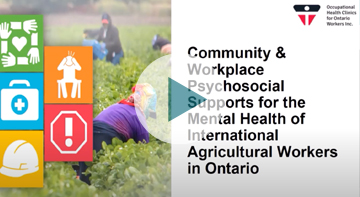
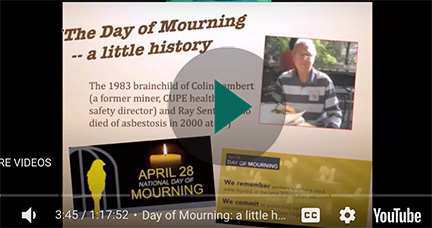
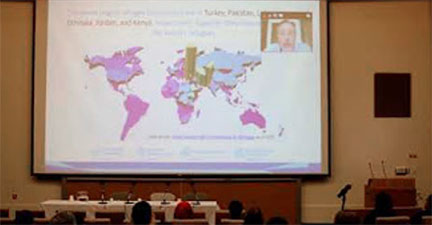


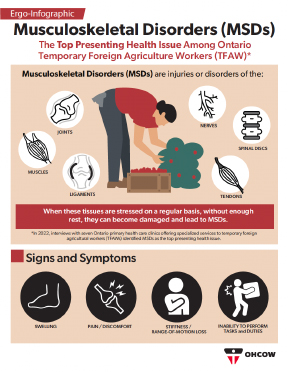
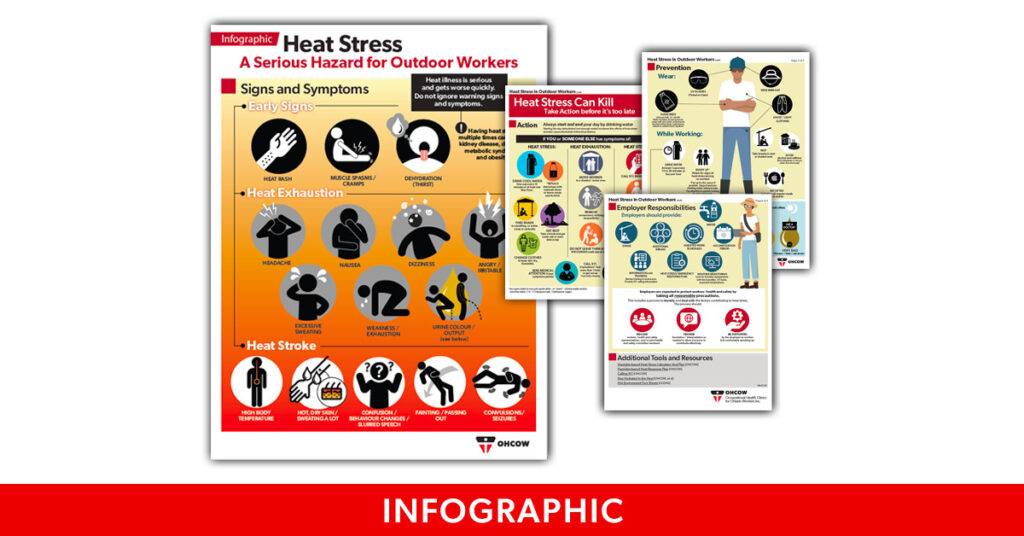
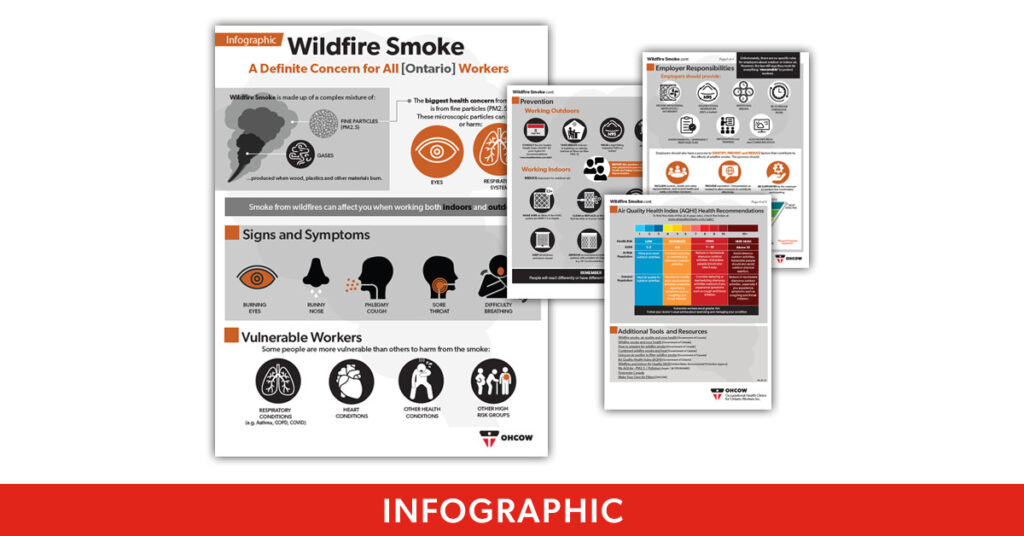
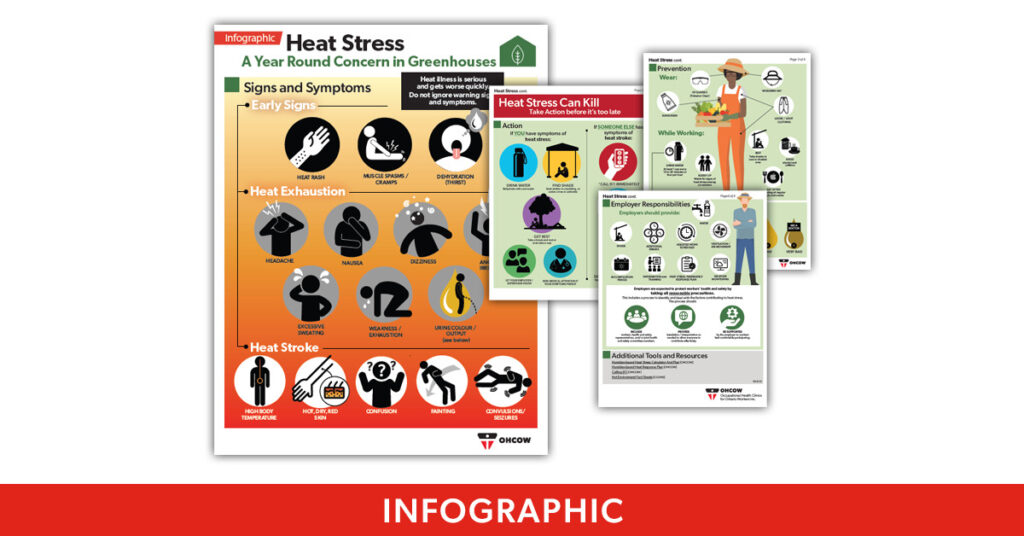



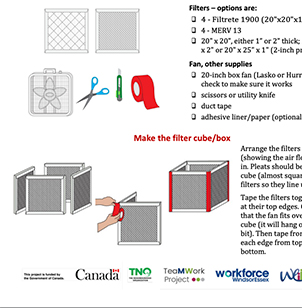
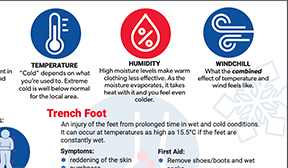


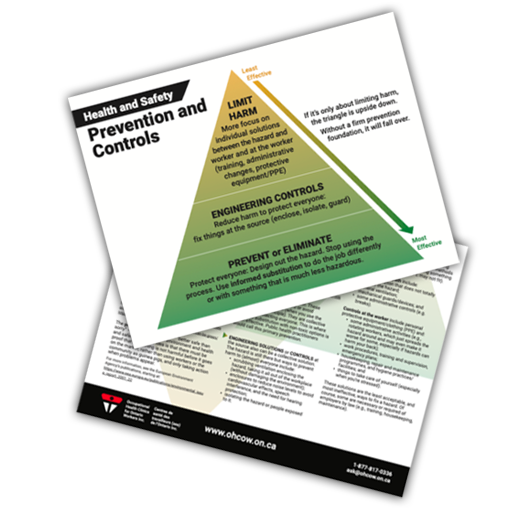
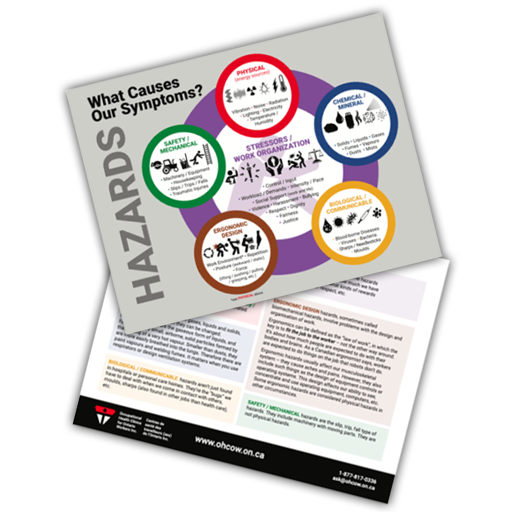
![May 27, 2022
[RECORDED WEBINAR]
Eduardo Huesca, Community Program and Outreach Coordinator and Leonor Cedillo, Research Lead, OMAFRA Project, OHCOW](https://www.ohcow.on.ca/wp-content/uploads/2021/11/logo-divider-bar.png)
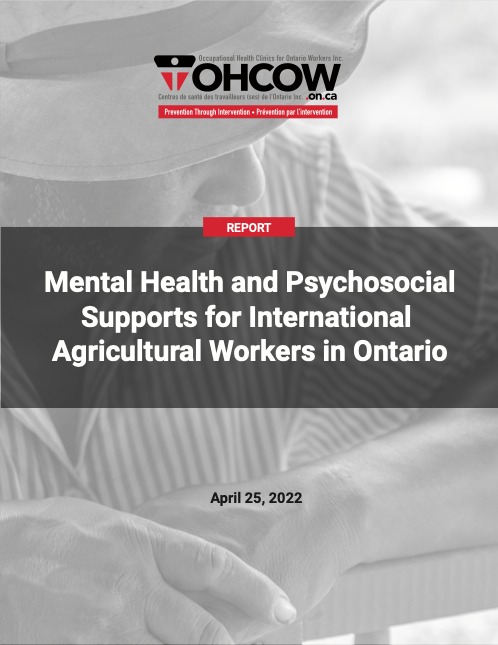

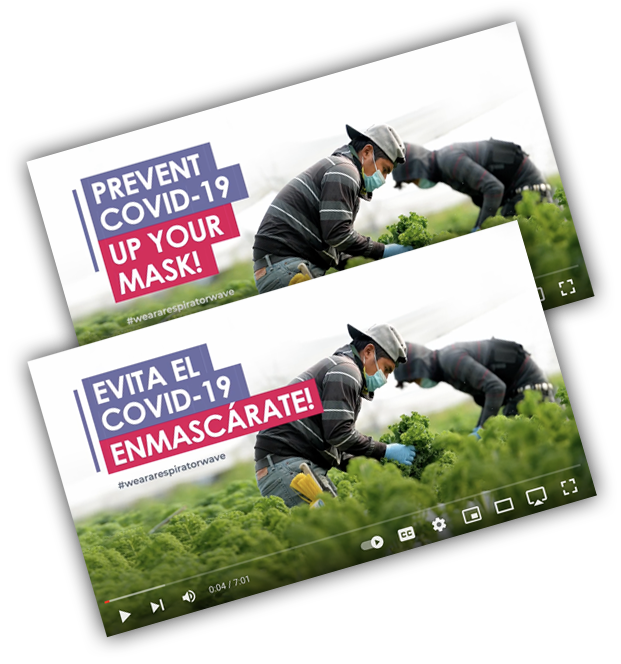

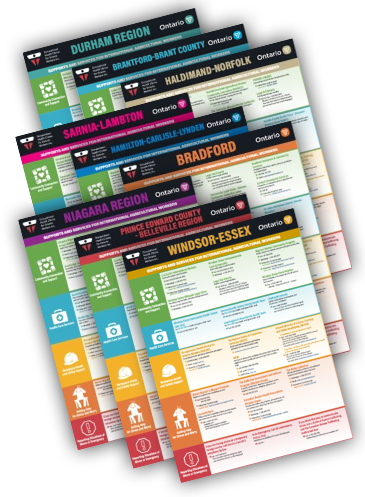
![February 3, 2022
[INFOGRAPHIC]
Available in English, Spanish and Tagalog
OHCOW
Aerosol Transmission Coalition](https://www.ohcow.on.ca/wp-content/uploads/2022/02/using-disposable-respirator.png)
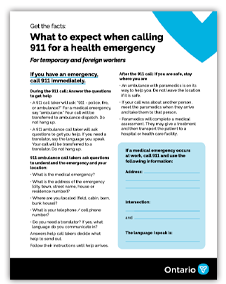

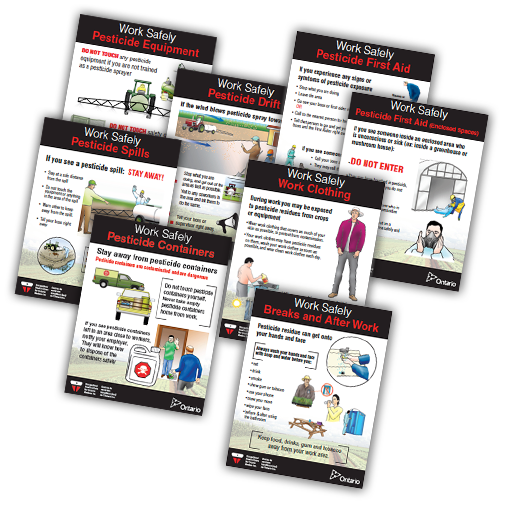
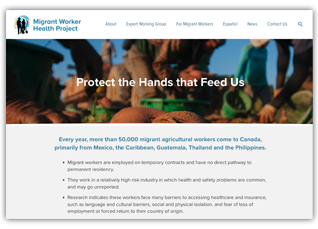
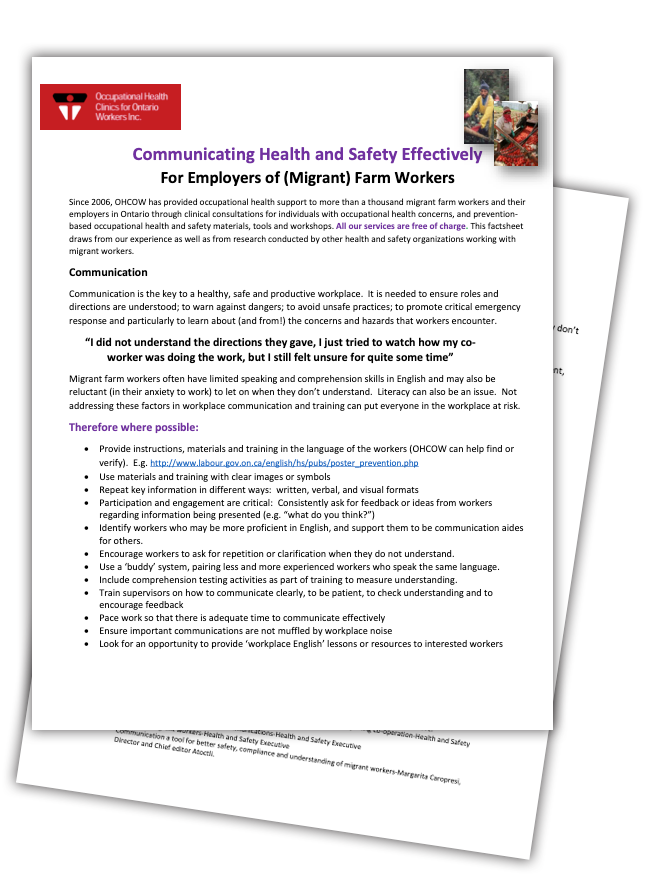
![2018
[FACTSHEET / HANDOUT]
OHCOW Migrant Farm Workers' Team](https://www.ohcow.on.ca/wp-content/uploads/2021/08/confidence_culture_factsheet.png)


